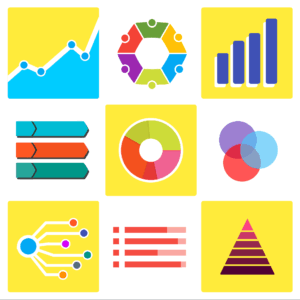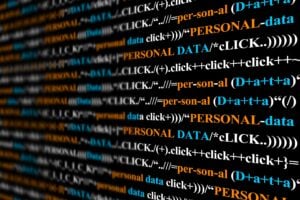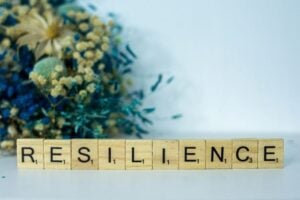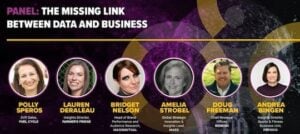With The Next Era of Insights Report, one aspect we explored was data storytelling themes. How has it evolved? What remains crucial and what’s being left off the table? Transforming complex data into compelling, actionable narratives might be considered essential but we sought to uncover some of the nuances of this concept.
Brought to you by All Things Insights and TMRE, “The Next Era of Insights Report” features 16 market research leaders examining how they and their organizations are navigating this changing terrain, with a focus on: human-AI collaboration; strategic transformation; storytelling evolution; accelerating ROI and more.
Creating Data-Driven Stories
For some market research leaders, storytelling is a foundational principle of the insights capability. Yet, for something viewed as so fundamental, it’s often still evaluated in an uneven fashion. But one thing is for sure, it’s driven by a need to share and present findings in a straightforward, meaningful fashion.
“It’s fundamental to what we’re doing every day because if we can’t translate the insights into meaningful bytes and into meaningful directions that lead to strategic thinking, then the work doesn’t work as hard,” says Tripp Hughes, Senior Director – Consumer Strategy, Organic Valley.
Hughes adds, “We’re constantly balancing the visual with the verbal storytelling. With the verbal storytelling, you’ve got to be able to connect the dots. If you can’t summarize it, succinctly create the picture, put it in a frame, and hang it for folks, they get distracted. The second piece of that: Everyone then wants to know, how did you get there? What was the verification of it? What’s the data behind it to your point? Being ready to tell the story is key.”
The preferences of each individual, after all, can play a role here as well. Storytelling in some ways is a very subjective art form.
“We don’t story tell certainly by using all charts and graphs. We do a lot of tabling. We do a lot of organization of pictorial flows of information and insights. That’s as much an art form as anything,” says Hughes. “To borrow a Yogi Berra-inspired quote, I had a CEO who said, I want more information from you, just less of it. What he was talking about was that distillation, and getting the data into meaningful story form, so that in a quick moment, they could absorb the point. Then you can back into the nuances and the flows of it all because it’s never just the point, but you set that up.”
A Rise in Storytelling Importance
The storytelling aspect is becoming even more important as the insights role transitions to more of a business consultant position.
Michael Nevski, Director, Global Insights, Visa, notes, “Before, research was more like as a researcher, we did this campaign, we analyzed it. We actually brought those insights to life. We incorporated that with marketing of products, so that kind of led to this transition. Nowadays, we need to be insights professionals, internal consultants, and tell the executive branch and business partners that story, not just the data. Tell me the compelling story, why the insights you see are going to be actionable and help my business. How it will, at the end of the day, change how I operate or the product I build.”
“It’s important to be very good storytellers,” says Nevski. “Although data is very important, analysis is very important. But the number one factor, to keep that seat at the table, we need to be compelling storytellers because everybody loves to listen to stories and understand them much better. It’s like a great visualization instead of a data table.”
An emphasis on storytelling as it ties to strategy is also key. There can also be a pathway to storytelling from AI developments.
Amir Akleh, VP, Business Strategy, Analytics & Insights, First Citizens Bank, notes, “I think the next step, in the next iteration of insights, storytelling will be more of an emphasis. Right now, just getting the qualitative AI-driven insights is of utmost importance, and then from there, driving the story around the insights. But I could ultimately see AI going from consuming raw data to then building out the visualization based on the business context and knowledge that we will feed it. Then, extracting insights and putting the story together so I can take the output and end result and communicate and disseminate to our senior leadership team.”
As it’s always challenging to consolidate vast amounts of data from multiple disparate solutions, AI may be able to improve upon that in terms of efficiency. But it’s still up to insights executives to “socialize” the results to stakeholders.
Ultimately, Akleh adds, the insights professional needs to build out the analytics and the data visualization and then publish that dashboard for that specific use case. Then it becomes key to socialize that with leaders across the relevant business units to ultimately track the health and trajectory of that business unit to ensure it is moving in the right direction.
Creating an Emotional Connection (Even with AI)
Is the use of AI changing the storytelling formula for insights? For Teresa Correa-Pavlat, Insights & Analytics Lead and AI-Agile Capabilities, Haleon, it’s certainly becoming an important tool—with the use of human expertise, of course.
Correa-Pavlat says, “Data storytelling is still vital to be able to bring the consumer to life. To that end, if you just use AI and sort of speak to it from a ‘powered by AI’ viewpoint, that doesn’t really create an emotional connection to the consumer that you are representing because it still needs to be a holistic story around what are the consumer needs and intentions that we’re solving for? But from a business perspective, if we’ve identified that this is our problem and this is our job to be done, you still need to tell that story around how it is that you’ve approached it, how you’re solving for it, and why we have the confidence that the approach we’re taking will land with consumers.”
There’s a distinction, too, in terms of data storytelling and the presentation capabilities available now.
She adds, “When we’re creating a story, it’s about the narrative and implication and so forth. But even just the presentation of it now with these tools, you can create an illustration that enables people to understand how the insight comes to life a bit more. We’re able to do that with some of these tools, whereas we couldn’t do that before. Some people are more visual, some people want to get into the mechanics of things, and that’s fine. But these tools enable us to serve up the data in different ways depending on who our audience is, who our key stakeholders are. That’s an amazing thing to have.”
Keeping Bias at Bay
For Aarti Bhaskaran, Global Head, Research & Insights, Snap Inc., there’s always bias in research that one needs to be concerned about. That remains true with research as well as storytelling the results.
“The biggest concern is confirmation bias. We are often seeking a number to prove something or a statement to prove something we already know. We need to be very conscious as researchers to reduce or eliminate confirmation bias,” she says.
AI development is now playing a role in this. “There’s an additional layer when it comes to AI, apart from confirmation bias that you’re seeking, you have to be very careful about what the training data is based on and how much bias is there in that particular data,” notes Bhaskaran.
One must examine the data and take it at only face value. She adds, “If you are doing an open search, you know that data is skewed towards certain countries, skewed towards English speaking content. There are gender skews. I did this exercise on LinkedIn, where if I describe myself and ask AI to generate a picture of me as a woman, nine out of ten times, AI will generate a picture of a man. This indicates that there is bias that’s present in the open-source AI models out there.”
“Let’s say you’re building an AI avatar of certain target audiences that you were doing research on, and then you ask them questions. I’ve seen that happen now. I like synthetic samples but I feel like the first four or five questions are good, then the well runs dry in terms of the depth of knowledge and the avatar that you’ve built. You need to know up to which level you can take the data and beyond which it’s probably made up or is probably heavily reliant on confirmation bias because the AI wants to make you happy in terms of the questions that you’re answering. It’s not giving you an answer in black or white. These are concerns that we all need to keep in mind in our rush to adopt AI into our work process,” advises Bhaskaran.
Landing Impact
Data and visual storytelling ultimately have to evolve with the times and emerging technologies—and tie into the insights mission of landing impact.
Oksana Sobol, Vice President Consumer Insights, The Clorox Company, notes, “Influencing end-to-end starts with how effectively we deliver guidance to the organization. Think about how you consume digital content now. You are probably rapidly switching between many sources, instantly deciding if it’s worth your time to go deeper. And diving deeper probably means reading as much as can fit on one phone screen. So why are insights organizations still delivering bloated decks to influence decisions?”
She adds, “Technology opens many doors to smarter, more engaging formats. The next report can be a podcast, a video short, an Axios-style brief, a punchy infographic. Insights can be unbundled and personalized, tailored to each stakeholder with clear, relevant actions.”
“It’s time to rethink not just what we deliver, but how we influence. In a world of micro-content and rapid decisions, we are all influencers, and our success depends on perfectly landing each idea,” says Sobol. “The evolution of storytelling or in terms of how we would reframe storytelling is how do we bring information to the business to paint a picture of a growth idea or influence a specific decision. That’s what storytelling means to me now.”
Video: “The Mastery of Data Storytelling,” courtesy of Canva.
Contributor
-

Matthew Kramer is the Digital Editor for All Things Insights & All Things Innovation. He has over 20 years of experience working in publishing and media companies, on a variety of business-to-business publications, websites and trade shows.
View all posts






































































































































































































































